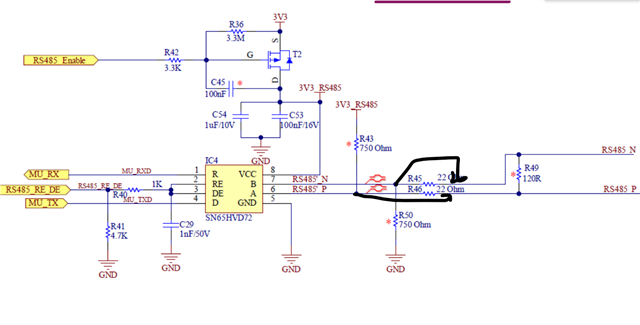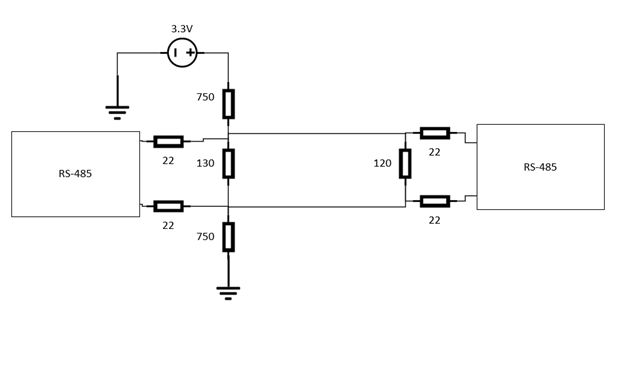Tool/software:
Hi,
I have few questions design related
My Application would be using around 40mA meaning 40mA RS-485 IC would have to pass through it with around 1.8m Cable between Two devices
Communication mode will be UART between just devices a Master and Slave.
1.Do i need Pull up and pull down for extra protection saying IC have Failsafe operation and how should i decide the value of pull up and pull down.
2.As RS-485 Connector would be exposed to outside world there is always risk of ESD so my standard says 8kV air and 4kv contact so i need to design in such a way that it can sustain ESD,so should i go with just TVS diodes or zener with a series Resistor?.
3.Is there a Need of series resistor and what should be its value? and postions of series resistor before protection or after.
4.Need of Termination resistor as i have just one device connected to my master is there still a need for termination resistor? and what value should i choose and how will it influence my current consumption saying my product is battery powererd.




